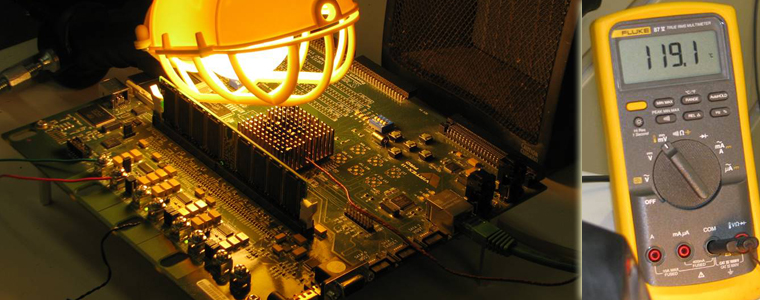Computer Engineering Research Lab Explores the Bounds of Computer Integration
The CE Lab is the successor to the Department’s Advanced Computer Architecture Lab (ACAL).

 Enlarge
Enlarge
A new lab in the EECS Department at the University of Michigan is home to researchers who are looking to stretch the definition of how computational systems are designed and employed.
The Computer Engineering Lab (CE Lab) is the successor to the Department’s Advanced Computer Architecture Lab (ACAL), which has long been the hub for multidisciplinary research into processor and system architectures, compilers, system reliability and runtime correctness, quantum information processing, CAD & VLSI, and related investigations.
As computer systems have evolved both in terms of form factor and in functionality, the notion of architectural research no longer reflects the range of activity that takes place in exploring the future of computing systems. The CE Lab expands its vision as a home for faculty and graduate student investigators whose work ranges from the design of minute, networked, and energy-harvesting “smart dust” systems to full warehouse-scale systems that efficiently process massive amounts of rich and mixed data.
Prof. Valeria Bertacco, director of the lab, comments on some of the drivers behind research taking place at the CE Lab. “A computer no longer sits on a desk. A computer today might be integrated into another object and will very likely be a node of a larger distributed computing system. At the same time, processors can now be fabricated with hundreds of cores in multiple layers and embedded logic, which can be integrated into systems that are tuned for large-scale processing.”
This revolution in the nature and context of computing requires a continuous expansion and re-evaluation of the building blocks required to build such systems, and researchers affiliated with the lab will explore theoretical, experimental and applied aspects of computer design, including embedded systems design, hardware security issues, computer architecture and data centers architecture, computer-aided design, testing and validation. The research breadth continues to encompass software layers close to hardware, including operating systems, compilers, and network protocols.
The engineering of computer systems has huge ramifications, according to Bertacco. “From medical discovery and treatments, to green architecture and smart infrastructure, to the ways in which societies and individuals interact, the nature of the computing that is present, and how it is engineered into context plays an important and enabling role.”
 MENU
MENU 
